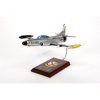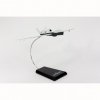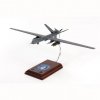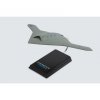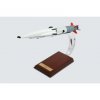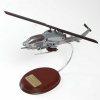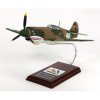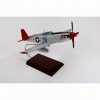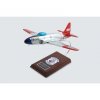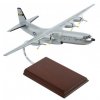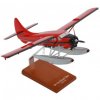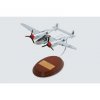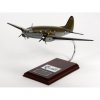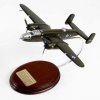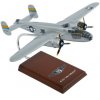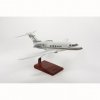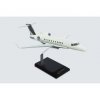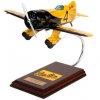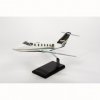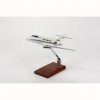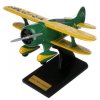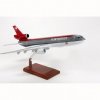Scale: 1/32 scale model
Wing Span: 15
Length: 16.68
CF094TE
|
Scale: 1/78 scale model
Wing Span: 18
Length: 6.75
CYGHNTR
|
Scale: 1/32 scale model
Wing Span: 20.75
Length: 9
CYMQ9T
|
Scale: 1/48 scale model
CX47BT
|
Scale: 1/15 scale model
Wing Span: 4
Length: 21
CX511T
|
Scale: 1/44 scale model
Length: 12.5
AM07033
|
Scale: 1/24 scale model
Wing Span: 18.5
Length: 16
|
AP47G
Scale: 1/32 scale model
Wing Span: 15.5
Length: 14
|
Scale: 1/24 scale model
Wing Span: 16.1
Length: 18.25
AP51CT
|
Scale: 1/36 scale model
Wing Span: 12.36
Length: 10.75
AM07003
|
Scale: 1/32 scale model
Wing Span: 17.75
Length: 14.75
AP80TE
|
McFarlane SportsPicks is no stranger to recreating some of the NBA’s greatest players as highly detailed action figures and their 20th lineup is no exception.
This case of 8 pieces contains (subject to change):
7x Blake Griffin
1x Blake Griffin or collector level figure
Please note: This item may have variants randomly inserted throughout the production run. We are unable to accept requests for specific variants
Pre-Order, Sold Out Available: May
|
Scale: 1/120 scale model
Wing Span: 18
Length: 15.75
AC133T
|
Scale: 1/40 scale model
Wing Span: 17.75
Length: 13
ADHOT
|
Scale: 1/24 scale model
Wing Span: 17.25
Length: 12.88
AF2ATE
|
Wing Span: 16.25
Length: 12.25
AF4U1NTR
|
Scale: 1/32 scale model
Wing Span: 19.5
Length: 14.25
AP38PL
|
Scale: 1/50 scale model
Wing Span: 12.5
Length: 9.08
AM07004
|
The B-29 Superfortress is a four-engine propeller-driven heavy bomber. It was one of the largest aircraft to see service in World War II and a very advanced bomber for its time, with features such as a pressurized cabin, an electronic fire-control system, and remote-controlled machine-gun turrets. Originally the B-29 was designed as a high-altitude daytime bomber, but it was used extensively in low-altitude night-time incendiary bombing missions. It was the primary aircraft used in the American firebombing campaign against the Empire of Japan in the final months of World War II and was used to carry out the atomic bombings that destroyed Hiroshima and Nagasaki.
This specific B-29 model is painted as "Fifi", which is owned by the Commemorative Air Force and is the only B-29 currently flying. "Fifi" tours the U.S.A. and Canada, taking part in air shows and offering flight experiences.
This handcrafted model is painstakingly built from Philippine mahogany by our skilled craftsmen with a wealth of detail and makes a great gift for any veteran, aviation enthusiast or history buff.
Scale: 1/72 scale model
Wing Span: 23.75
Length: 17
AB29FT
|
Scale: 1/72 scale model
Wing Span: 18
Length: 14
AC046TE
|
Scale: 1/72 scale model
Wing Span: 20
Length: 11.25
CB57FT
|
Scale: 1/65 scale model
Wing Span: 12.5
Length: 10
AM07005
|
THIS LISTING IS FOR ONE BRAND NEW IN THE PACKAGE FULL SIZE FATHEAD FEATURING PRINCESSES AURORA, CINDERELLA & BELLE (DIMENSIONS : 4'W x 4'4"H WALL GRAPHIC. IT'S THE PERFECT GIFT FOR ANY DISNEY FANS. THESE ARE MADE FROM TOUGH AND FADE RESITANT VINYL AND FEATURE HIGH RESOLUTION 3D GRAPHICS. FATHEADS USE LOW TACK ADHESIVE AND CAN BE MOVED AND REUSED WITHOUT DAMAGING SURFACES.. DONT MISS YOUR CHANCE TO OWN THIS ITEM. THIS ITEM IS BRAND NEW IN THE PACKAGE AND HAS NEVER BEEN OPENED OR USED.
|
The B-25 Mitchell was an American twin-engined medium bomber manufactured by North American Aviation. The B-25 first gained fame as the bomber used in the 18 April 1942 Doolittle Raid, in which 16 B-25Bs led by Lieutenant Colonel Jimmy Doolittle attacked mainland Japan, four months after the bombing of Pearl Harbor. The mission gave a much-needed lift in spirits to the Americans, and alarmed the Japanese who had believed their home islands were inviolable by enemy forces. It was used by many Allied air forces, in every theater of World War II, as well as many other air forces after the war ended, and saw service across four decades.
This specific B-25 is painted as "Briefing Time", a B-25 used by the 489th Bomb Squadron, 57th Bomb Wing, 340th Bomb Group of the 12th Air Force; "Briefing Time" served in the Italian campaign.
This handcrafted model is painstakingly built from Philippine mahogany by our skilled craftsmen with a wealth of detail and makes a great gift for any veteran, aviation enthusiast or history buff.
Scale: 1/41 scale model
Wing Span: 19.75
Length: 15.75
AB25BTS
|
The B-25 Mitchell was an American twin-engined medium bomber manufactured by North American Aviation. The B-25 first gained fame as the bomber used in the 18 April 1942 Doolittle Raid, in which 16 B-25Bs led by Lieutenant Colonel Jimmy Doolittle attacked mainland Japan, four months after the bombing of Pearl Harbor. The mission gave a much-needed lift in spirits to the Americans, and alarmed the Japanese who had believed their home islands were inviolable by enemy forces. It was used by many Allied air forces, in every theater of World War II, as well as many other air forces after the war ended, and saw service across four decades.
This specific B-25 is painted as "Miss Mitchell", a B-25 used during WWII. She is still in flying condition and is owned by the Commemorative Air Force and is regularly flown to airshows around the country.
This handcrafted model is painstakingly built from Philippine mahogany by our skilled craftsmen with a wealth of detail and makes a great gift for any veteran, aviation enthusiast or history buff.
Scale: 1/41 scale model
Wing Span: 19.75
Length: 15.75
AB25MMT
|
McFarlane SportsPicks is no stranger to recreating some of the NBA’s greatest players as highly detailed action figures and their 20th lineup is no exception.
This case of 8 pieces contains (subject to change):
7x Derrick Rose
1x Derrick Rose or collector level figure
Please note: This item may have variants randomly inserted throughout the production run. We are unable to accept requests for specific variants
|
The B-25 Mitchell was an American twin-engined medium bomber manufactured by North American Aviation. The B-25 first gained fame as the bomber used in the 18 April 1942 Doolittle Raid, in which 16 B-25Bs led by Lieutenant Colonel Jimmy Doolittle attacked mainland Japan, four months after the bombing of Pearl Harbor. The mission gave a much-needed lift in spirits to the Americans, and alarmed the Japanese who had believed their home islands were inviolable by enemy forces. It was used by many Allied air forces, in every theater of World War II, as well as many other air forces after the war ended, and saw service across four decades.
This specific B-25 is painted as "Maid in the Shade", a B-25 used during WWII. She is still in flying condition and is owned by the Commemorative Air Force and is regularly flown to airshows around the country.
This handcrafted model is painstakingly built from Philippine mahogany by our skilled craftsmen with a wealth of detail and makes a great gift for any veteran, aviation enthusiast or history buff.
Scale: 1/41
Wing Span: 19.75
Length: 15.75
AB25MST
|
This handcrafted Ohio Class Submarine model, in 1/350 scale, is painstakingly built by our skilled craftsmen with a wealth of detail. The Ohio class is a class of nuclear-powered submarines used by the United States Navy. The Navy has a total of 18 Ohio-class submarines, these are the largest submarines ever built for the U.S. Navy. The Ohio-class submarines were designed specifically for extended war-deterrence patrols. Each of these submarines are provided with two complete crews, called the Blue crew and the Gold crew, with each crew serving typically on 70 to 90 day deterrent patrols. The design of the Ohio class allows the warship to operate for about fifteen years between major overhauls.
Our wooden Ohio Class Submarine model is an exact replica of the original, handcrafted with vigilance by master craftsmen. After it is sanded and puttied, skilled artists paint on the intricate details. Clear lacquer provides the finishing touch and long-lasting protection. Each ship model comes on a a display base with brass pedestals and a brass name plate.
Scale: 1/350 scale model
Beam: 1.5
Length: 19
MBSOC
|
This handcrafted Seawolf Class Submarine model, in 1/350 scale, is painstakingly built by our skilled craftsmen with a wealth of detail. The Seawolf class is a class of nuclear-powered fast attack submarines (SSN) in service with the United States Navy. The class was the intended successor to the Los Angeles class, ordered at the end of the Cold War in 1989. At one time, an intended fleet of 29 submarines was to be built over a ten-year period, later reduced to twelve submarines. The end of the Cold War and budget constraints led to the cancellation in 1995 of any further additions to the fleet, leaving the Seawolf class limited to just three boats. This, in turn, led to the design of the smaller Virginia class.
Our wooden Seawolf Class Submarine model is an exact replica of the original, handcrafted with vigilance by master craftsmen. After it is sanded and puttied, skilled artists paint on the intricate details. Clear lacquer provides the finishing touch and long-lasting protection. Each ship model comes on a a display base with brass pedestals and a brass name plate.
Scale: 1/350 scale model
Beam: 1.25
Length: 11.5
MBSSC
|
McFarlane SportsPicks is no stranger to recreating some of the NBA’s greatest players as highly detailed action figures and their 20th lineup is no exception.
This case of 8 pieces contains (subject to change):
7x Kevin Durant
1x Kevin Durant or collector level figure
Please note: This item may have variants randomly inserted throughout the production run. We are unable to accept requests for specific variants
|
McFarlane SportsPicks is no stranger to recreating some of the NBA’s greatest players as highly detailed action figures and their 20th lineup is no exception.
This case of 8 pieces contains (subject to change):
7x Kobe Bryant
1x Kobe Bryant or collector level figure
Please note: This item may have variants randomly inserted throughout the production run. We are unable to accept requests for specific variants
|
The Boeing B-17 Flying Fortress is a four-engine heavy bomber aircraft developed in the 1930s. The B-17 was primarily employed by the United States Army Air Forces (USAAF) in the daylight precision strategic bombing campaign of World War II against German industrial and military targets. From its pre-war inception, it was touted as a strategic weapon; it was a potent, high-flying, long-range bomber that was able to defend itself, and to return home despite extensive battle damage. The B-17 quickly established itself as an effective weapons system, dropping more bombs than any other U.S. aircraft in World War II.
This specific B-17 model is painted as "Red Gremlin". The "Red Gremlin" crew included Dutch Van Kirk, Paul Tibbets and Tom Ferebee, who would all later fly together in the B-29 "Enola Gay" and drop the first atomic bomb.
This handcrafted model is painstakingly built from Philippine mahogany by our skilled craftsmen with a wealth of detail and makes a great gift for any veteran, aviation enthusiast or history buff.
Scale: 1/62 scale model
Wing Span: 19.9
Length: 14.3
AB17RGT
|
The Boeing B-17 Flying Fortress is a four-engine heavy bomber aircraft developed in the 1930s. The B-17 was primarily employed by the United States Army Air Forces (USAAF) in the daylight precision strategic bombing campaign of World War II against German industrial and military targets. From its pre-war inception, it was touted as a strategic weapon; it was a potent, high-flying, long-range bomber that was able to defend itself, and to return home despite extensive battle damage. The B-17 quickly established itself as an effective weapons system, dropping more bombs than any other U.S. aircraft in World War II.
This specific B-17 model is painted as "Nine O' Nine", a B-17 with the 323rd Bomb Squadron, 91st Bomb Group. She completed 140 combat missions during WWII and is still in flying condition and owned by the Collings Foundation.
This handcrafted model is painstakingly built from Philippine mahogany by our skilled craftsmen with a wealth of detail and makes a great gift for any veteran, aviation enthusiast or history buff.
Wing Span: 23.5
Length: 16.88
AB17NN
|
The Boeing B-17 Flying Fortress is a four-engine heavy bomber aircraft developed in the 1930s. The B-17 was primarily employed by the United States Army Air Forces (USAAF) in the daylight precision strategic bombing campaign of World War II against German industrial and military targets. From its pre-war inception, it was touted as a strategic weapon; it was a potent, high-flying, long-range bomber that was able to defend itself, and to return home despite extensive battle damage. The B-17 quickly established itself as an effective weapons system, dropping more bombs than any other U.S. aircraft in World War II.
This specific B-17 model is painted as "Liberty Belle", which was the name of several individual combat B-17s used during WWII.
This handcrafted model is painstakingly built from Philippine mahogany by our skilled craftsmen with a wealth of detail and makes a great gift for any veteran, aviation enthusiast or history buff.
Scale: 1/62 scale model
Wing Span: 19.9
Length: 14.3
AB17LBT
|
The B-25 Mitchell was an American twin-engined medium bomber manufactured by North American Aviation. The B-25 first gained fame as the bomber used in the 18 April 1942 Doolittle Raid, in which 16 B-25Bs led by Lieutenant Colonel Jimmy Doolittle attacked mainland Japan, four months after the bombing of Pearl Harbor. The mission gave a much-needed lift in spirits to the Americans, and alarmed the Japanese who had believed their home islands were inviolable by enemy forces. It was used by many Allied air forces, in every theater of World War II, as well as many other air forces after the war ended, and saw service across four decades.
This specific B-25 model is painted as "Panchito", Don Seiler’s B-25J from the 396th Bomb Squadron, 41st Bombardment Group, 7th Air Force. Panchito flew 19 missions over Japan from December 1943 to October 1944. "Panchito" was named after the feisty rooster in the Disney film “The Three Cabarellos” and is still in flying condition. She is currently owned by Rag Wings and Radials and tours the country doing airshows that support disabled american veterans.
This handcrafted model is painstakingly built from Philippine mahogany by our skilled craftsmen with a wealth of detail and makes a great gift for any veteran, aviation enthusiast or history buff.
Scale: 1/41 scale model
Wing Span: 19.75
Length: 15.75
AB25PTS
|
McFarlane SportsPicks is no stranger to recreating some of the NBA’s greatest players as highly detailed action figures and their 20th lineup is no exception.
This case of 8 pieces contains (subject to change):
7x Carmello Anthony
1x Carmello Anthony or collector level figure
Please note: This item may have variants randomly inserted throughout the production run. We are unable to accept requests for specific variants
|
McFarlane SportsPicks is no stranger to recreating some of the NBA’s greatest players as highly detailed action figures and their 20th lineup is no exception.
This case of 8 pieces contains (subject to change):
7x John Wall
1x John Wall or collector level figure
Please note: This item may have variants randomly inserted throughout the production run. We are unable to accept requests for specific variants
|
This handcrafted LCVP 1/24 scale model is painstakingly built by our skilled craftsmen with a wealth of detail. The LCVP (Landing Craft, Vehicle, Personnel) is a landing craft mostly used during the World War II. LCVP was basically constructed from plywood. This shallow-draft, barge-like boat could ferry a platoon-sized complement of 36 fully armed men (max load is 8,100 lbs) at 9 knots (17 km/h), or a 6,000 pound Jeep, and other equipment and supplies essential to amphibious operations. Men generally entered the boat by climbing down a cargo net hung from the side of their troop transport; they exited by charging down the boat's bow ramp.
It was these boats that made the D-Day landings at Normandy, Iwo Jima, Guadalcanal, Tarawa, and hundreds of lesser-known places possible. Without its uniquely designed craft there could not have been a mass landing of troops and material on European shores or on the beaches of the Pacific islands, at least not without a tremendously higher rate of Allied casualties.
Our wooden LCVP model is an exact replica of the original, handcrafted with vigilance by master craftsmen. After it is sanded and puttied, skilled artists paint on the intricate details. Clear lacquer provides the finishing touch and long-lasting protection. Each ship model comes on a a display base with brass pedestals and a brass name plate.
Scale: 1/24 scale model
Beam: 5.75
Length: 18.75
MBLCVPT
|
McFarlane SportsPicks is no stranger to recreating some of the NBA’s greatest players as highly detailed action figures and their 20th lineup is no exception.
This case of 8 pieces contains (subject to change):
7x Dwyane Wade
1x Dwyane Wade or collector level figure
Please note: This item may have variants randomly inserted throughout the production run. We are unable to accept requests for specific variants
Pre-Order, Sold Out Available: May
|
"The Piper J-3 Cub is a small, simple, light aircraft that was built between 1937 and 1947 by Piper Aircraft. With tandem (fore and aft) seating, it was intended for flight training but became one of the most popular and best-known light aircraft of all time. The Cub's simplicity, affordability and popularity invokes comparisons to the Ford Model T automobile. The aircraft's standard yellow paint has come to be known as “Cub Yellow” or ""Lock Haven Yellow".
Scale: 1/24 scale model
Wing Span: 16.5
Length: 12.25
KPJ3T
|
"The Hawker 800 is a mid-size twin-engine corporate aircraft. It was originally designed and manufactured by British Aerospace as the BAe 125, it is currently manufactured by Hawker Beechcraft. The Hawker was originally designed as the DH-125 by de Havilland in 1961. It was acquired by Hawker Siddeley in 1963 and became the HS 125 and later acquired by British Aerospace in 1977 where it was the BAe 125. Then in 1993, Raytheon acquired British Aerospace Corporate Jets Ltd. (which became Raytheon Corporate Jets), and they began marketing this aircraft as the Hawker 800. The current Hawker version is identified as the Hawker 850XP and was certfied for operation in March 2006. This version also incorporates upgraded avionics and a redesigned interior. The Hawker 850XP is somewhat identical to the Hawker 800XP except that it includes winglets which have extended its operating range by 100 nautical miles. The Hawker 800XP has long range capabilities and one of the largest cabins in the midsize jet category. Its combination of speed, comfort and cabin size make it one of the most popular business jets around. Typically seating 8-10 passengers, the Hawker 800XP boasts almost 40% more space than its closest competitors. Baggage area is located in the cabin with 48 cubic feet of interior luggage space. Some examples of nonstop flights include California to Detroit, New York to Aspen, and Dallas to New York."
Scale: 1/32 scale model
Wing Span: 20.25
Length: 19.25
KH800XPTR
|
"The Hawker 850XP is considered the best-selling midsize corporate jet because of its new winglets and advanced Pro Line 21 avionics. Originally designed and manufactured by British Aerospace as the BAe 125, it is currently manufactured by Hawker Beechcraft. The 850XP is identical to the 800XP except that it includes winglets which have extended its operating range by 100 nautical miles. This version also incorporates upgraded avionics and a redesigned interior. The Hawker 850XP essentially fills the gap left behind by the Hawker 1000 when production of that aircraft ceased. This current version was certified for operation in March 2006. The Hawker 850XP has the new standard in design, technology and performance breakthroughs. With new winglets that reduce drag and an advanced upgraded avionics suite that enhances operational efficiency, the Hawker 850XP climbs faster, delivers better performance and goes farther on less fuel than its predecessor. In addition, with the largest cabin in its class, the Hawker 850XP provides unparalleled passenger comfort. The Hawker could carry 2 pilots and 8-10 passengers. The Hawker 800XP boasts almost 40% more space than its closest competitors. Baggage area is located in the cabin with 48 cubic feet of interior luggage space. Some examples of nonstop flights include California to Detroit, New York to Aspen, and Dallas to New York. "
Scale: 1/48 scale model
Wing Span: 12.88
Length: 12.88
KH850TR
|
"The Hawker 4000 super mid-size business jet, developed by Raytheon Aircraft Company, is the largest in the Hawker family. Originally known as Hawker Horizon prior to November 2005, it features an all-composite fuselage and swept aluminum wing design. It made its first flight on August 11, 2001, and official debut in November 2005 when a development aircraft was displayed at the National Business Aviation Association convention. The 4000 can seat eight to twelve passengers. The eight-seat cabin holds four pairs of club chairs with writing tables. The aircraft's carbon composite construction gives it more interior space than many jets in its class. This composite construction also makes the aircraft much lighter than a standard aluminum structure, allowing a maximum range of 3,445 nautical miles and a service ceiling of 45,000 feet. The aircraft's avionics system provides full authority automatic throttle, moving map displays and vertical navigation. The cabin air conditioning and pressurization system is digitally controlled, which can significantly improve passenger comfort when gas becomes trapped in the gastrointestinal tract, middle ear and paranasal sinuses. The US Federal Aviation Administration granted the Hawker 4000 type certification in December 2004. Shortly after, the first aircraft was delivered to Jack DeBoer, a businessman from Kansas. Final type certification was given on November 21, 2006 and production deliveries are scheduled to begin in September 2007. As of March 2007, a total of more than 130 aircraft have been ordered. Customers include the Jordan Grand Prix Racing Team, Flight Options LLC and NetJets. NetJets placed a contract for 50 aircraft in December 2005, the largest single commercial order in the history of Raytheon Aircraft. Deliveries will begin by the end of 2007 through 2013. In May 2007, NetJets Europe ordered 32 aircraft which are slated for delivery between 2008 and 2016. "
Scale: 1/48 scale model
Wing Span: 15.25
Length: 17.25
KHHTR
|
"The HK-1 (H-4) Spruce Goose or Hercules, manufactured by Hughes Aircrafts, is a cargo-type flying boat aircraft. It had its first and only flight for just over a mile, on November 2, 1947. This trial was simple vindication from the detractors of the program and it is now looked back upon as a great moment in flight history. The Hercules is the largest flying boat ever built, and has the largest wingspan and height of any aircraft in history. The engineers of the said airplane incorporated eight of the most powerful engines ever, 3,000-horsepower Pratt and Whitney radial reciprocating engines with 17-foot diameter props. To feed the engines, they created a mammoth fuel storage and delivery system. The entire airframe and surface structures are composed of laminated wood (primarily birch, not spruce). Birch was chosen because testing proved it light, strong, and resistant to splitting, dry rot and deterioration. All primary control surfaces, except the flaps, are fabric covered. The aircraft's hull is divided into two areas: a flight deck for the operating crew and a large cargo hold. The H-4 was put into storage and carefully preserved, until after Howard Robard Hughes death in April of 1976. On February 27, 1993 the Hughes Flying Boat, commonly known as the Spruce Goose, arrived in McMinnville marking the end of the 1,055 mile, 138 day odyssey from Long Beach. It survives, in good condition, and became an exciting tourist attraction, at the Evergreen Aviation Museum. The popular Spruce Goose is now appropriately regarded as a true American icon."
KHSGT
Scale: 1/200 scale model
Wing Span: 19.25
Length: 13.25
Upc: 080957800304
|
"On April 7, 1967, Trans World Airlines (TWA) became one of the world's first all-jet airlines with the retirement of their last Lockheed L-1049G Super Constellation and L-1649 Starliner aircraft. Many people consider the L-1049 Super Constellation to be the loveliest commercial aircraft ever built, which is why they often affectionately call it the ""Super Connie""./P> The L-1049G Super Constellation took off from Hamburg, Germany, to New York, USA, with a stop in Dusseldorf. The flight lasted 17 hours. In those days, flights across the Atlantic heading for America could be accomplished only with an intermediate stop. Flights to Germany were usually non-stop, due to the tail-wind. This marked the beginning of a new era. It wasn't until the Super Constellation that the plane became a means of mass transportation that allowed people to travel quickly and comfortably to cities around the world. The L-1049-G Super Constellation has 5 flight crews. The L-1049-G's capacity is typically 62-95 passengers, up to 109 could be seated. The L-1049-G Super Constellation has a maximum speed of 380 mph and range of 5,400 mi. The L-1049G is distinguished by round windows and the ability to carry wingtip fuel tanks. The L-1049G Super Constellation had another distinguishing feature: It was the first commercial aircraft to have a pressurised cabin."
Length 7.75
Wingspan 8.5
|
"The L-188 Electra is an airliner built and manufactured by Lockheed. The L-188's was designed by Lockheed in 1954 and its maiden flight was on December 6, 1957. It is a low-wing monoplane with retractable tricycle landing gear, powered by four Allison 501D turboprops. Many airlines in the US flew the L-188. The primary users and operators of the L-188 are American Airlines, Eastern Airlines, Braniff and Airways, KLM. The L-188 flew in commercial service until the mid-1970s. A total of 144 L-188s were built, with 57 destroyed in accidents. The L-188 has a crew of six with a seating capacity of 99 to 127 passengers. It has a cruising speed of 362 knots."
Scale: 1/72 scale model
Wing Span: 16.5
Length: 17.5
KL188EAT
|
The sole DGA-6 was constructed in 1934 by Gordon Israel and Benjamin Howard. It featured a steel tube fuselage with a plywood skinned wing. With Benny Howard as Pilot and Gordon Israel as Co-Pilot, Mister Mulligan placed first in the 1935 bendix with an average speed of 238.7 mph between Los Angeles and Cleveland. Harold Neumann flew 'Mister Mulligan' in the 1935 Thompson Trophy and captured first place after Roscoe Turner lost his engine and dropped out. The aircraft shed a prop blade in the 1936 Bendix race was lost totaled without loss of life in an off airport landing. Howard went on to produce a commercial version of the ship, the DGA-8 which was followed by the DGA-9, DGA-11, and DGA-12.
Scale: 1/20 scale model
Wing Span: 19.88
Length: 15.38
KDGA6TE
|
"The Legacy was manufactured by Embraer, a Brazilian aircraft manufacturer and produces commercial, military, and corporate aircraft. Legacy was first launched in July of 2000, the. Few months after it was launched, the Legacy made its maiden flight from the company’s plant in San Jose dos Campos. The Embraer Legacy is super mid-size corporate and executive jet derived from the ERJ-135 and ERJ-145 commercial regional jetliners, with the Legacy Corporate Shuttle configured with up to 19 seats and the Legacy Executive with up to 15 seats. The only changes from its derivative include the addition of winglets and fuselage strakes, underbelly and cargo compartment tanks, higher-rated turbofan engines, new fuel system, higher maximum Mach operation (MMO), an entirely new main cabin and advanced avionics suite. The aircraft has a circular cross-section fuselage, rear-mounted high by-pass ratio engines, low mounted swept wings and a T-tail plane. The wings are of two-spar wing design with a third spar to support the landing gear. The wing leading edges are made of aluminum. The wings are fitted with winglets, which provide increased lift and improved efficiency with reduced drag of the tip vortex. The T-tail is of aluminum box construction with aluminum leading edges on the tail plane. The fin leading edge is of composite construction. The Legacy is powered by higher rated engines than the ERJ-135 aircraft. The Legacy Executive aircraft has two rear mounted Rolls-Royce engines AE 3007A1P turbofan engines rated at 3,368kg and mounted on pylons supplied by Sonaca of Belgium. International Nacelle Systems supplied the engine nacelles and the optional clamshell thrust reversers. The engines are fitted with full authority digital engine control (FADEC) and the engine air intakes are fitted with an engine bleed air anti-icing system.. "
Scale: 1/48 scale model
Wing Span: 17.50
Length: 21.50
KELTR
|
The Gee Bee Model Z was an American racing aircraft of the 1930s, the first of the Super Sportster aircraft built by Granville Brothers Aircraft. The Model Z was built with the sole intention of winning the Thompson Trophy, which it was successful, setting a speed record for land-based aircraft. Only one Model Z was built and unfortunately destroyed during a fatal crash while attempting to set a world speed record. The 1932 R-1 and its sister ship, the R-2, were the successors of the Model Z.
This handcrafted model is painstakingly built from Philippine mahogany by our skilled craftsmen with a wealth of detail and makes a great gift for any veteran, aviation enthusiast or history buff.
Scale: 1/20 scale model
Wing Span: 14.25
Length: 9
KGBZTE
|
"The H-1 is a racing aircraft built by Howard Hughes' company, setting a world speed airspeed record and a trnascontinental speed record across the United States. The H-1 was the first aircraft produced by Hughes Aircraft Corporation. The H-1's maiden flight was in 1935, breaking the world land-plane speed record of 352 mph averaged over 4 times passes with Hughes at the controls. In October 1934, the world seaplane speed record was 440 mph set by a Macchi M.C.72. Hughes made minor chnages to the H-1 Racer to make it more suitable for a transcontinental speed record attempt. The most significant change was the new, longer set of wings, which gave the plane a lighter wing loading. In January 1937, Hughes set a new transcontinental speed record, flying non-stop from Los Angeles to New York City in 7 hours, 28 minutes and 25 seconds. His average speed over the flight was 322 mph. Hughes assumed the United States Army Air Force to embrace the H-1s new design and make it as a basis for new generation of U.S. fighter planes, but it didn't happen when the USAAF used a fleet of P-39 Airacobras and P-40 Warhawks during World War II. In 1975, the original H-1 Racer was donated to the Smithsonian and is on display at the National Air and Space Museum. "
Scale: 1/20 scale model
Wing Span: 15
Length: 15
KH1BTE
|
"The Hawker 400 is a small twin-engine corporate aircraft which was designed by Raytheon's Beech Aircraft Company subsidiary (now a part of Hawker Beechcraft). The aircraft was originally designed as the Mitsubishi MU-300 Diamond. Beechcraft bought the production rights and began manufacturing it as their own model. The Hawker 400 was initially redesignated as the Beechjet 400 and was certified by the FAA in May 1985. Beechcraft further developed their own improvements to the Beechjet 400 model leading to the 400A in 1990. In 1993, Beechcraft purchased Hawker business jet products from British Aerospace. The Hawker 400XP is the latest model, incorporating further aerodynamic, mechanical and interior improvements gleaned from the Hawker 800XP. Hawker 400XP general characteristics include 2 pilot seats for crews, capacity of 7 passengers and a maximum speed of 518 mph. The Hawker 400XP is a unique aircraft offering value, flexibility and low operating costs combined with the ruggedness, spaciousness and technological sophistication of a much larger jet. The Hawker 400XP is powered by Pratt and Whitney Canada engines. The aircraft is the fastest light-jet market. Its innovative design includes a well-equipped galley, four-space center-club seating and has the largest cabin of any comparable aircraft."
Scale: 1/32 scale model
Wing Span: 16.25
Length: 18.25
KH400XPTR
|
"The new Hawker 750 is designed to satisfy the market’s unmet need for a high-performance, ultra-comfortable light-midsize business jet. A derivative of the famed Hawker 800-series airframe, the Hawker 750 refines its predecessor’s capabilities even further with the best range and payload performance in its class. Even more, the Hawker 750 features the highly successful Honeywell engines, a large cabin with internal and external baggage compartments, and state-of-the-art Collins Pro Line 21 avionics. When you also consider that the aircraft offers proven reliability, outstanding value and predictable operating costs, you come to only one foregone conclusion: the new Hawker 750 is your best choice in the light-midsize market."
Scale: 1/48 scale model
Wing Span: 12.75
Length: 12.75
KH750TR
|
"The Hawker 800 is a mid-size twin-engine corporate aircraft which was originally designed and manufactured by British Aerospace and is currently manufactured by Hawker Beechcraft. The Hawker 800XP business jet is derived from the UK-built de Havilland/Hawker Siddely and British Aerospace 125, which was first built in 1962. In 1993, Raytheon purchased the Series 800 program and acquired the name Hawker 800. A number of Hawker 800XP are in Raytheon's fractional ownership company's fleet, Flight Options LLC, along with Beechjet and KingAir B200 aircraft. There's a military version of the Hawker 800 used in South Korea for tactical reconnaissance, surveillance and SIGINT (Signals Intelligence) tasks and there were 8 specially-equipped aircraft delivered in 2000. The search and rescue version of the Hawker 800 was used by Japan and has a large observation windows, a flare and marker-buoy dispenser system, life-raft and emergency equipment dropping system and enhanced salt water corrosion prevention. The aircraft also incorporates a Toshiba 360-degree search radar, melco thermal imaging equipment and other military communications equipment for its mission. The Hawker 800XP has long range capabilities and has the largest cabins in the midsize jet category. Its combination of speed, comfort and cabin size makes it one of the most popular business jets around. It has a typical seating of 8-10 passengers and has a maximum seating configuration of 13 pax. It has a maximum cruise speed of 451 ktas and a range with Maximum Pax of 2,330 nm. The Hawker 800XP is made up of all-metal construction, having a low sweptback one-piece wings, a high tailplane and incorporates rearmounted engines. In November 2005, Hawker 850XP was introduced by Hawker, which became the successor to the Hawker 800XPi."
Scale: 1/48 scale model
Wing Span: 12.88
Length: 12.88
KH800TR
|
"The DC-8 is a medium to long range airliner manufactured by McDonnell Douglas between 1959 and 1972. It first flew on May 30 1958 in front of over 95,000 employees and spectators and flew for 2 Hours and 7 Minutes on the initial flight. The next test flight occurred on June 4, 1958 and between June and late August Ship One accumulated 72 hours of in-flight testing in a total of 22 flights. After a decade, the DC-8 established commercial transport world records for speed, altitude, distance and payload. As fuel efficiency and noise concerns became more important during the 1970s, many of these later models were equipped with new advanced turbofan engines and re-designated as the Super 71, Super 72, and Super 73, respectively. The DC-8-71 version is similar to the Boeing 707 in performance and payload. The 71 model made its first flight in April 1982. While the DC-8-73 version was used in secret missions by the CIA's ""Air America"" program until it was disbanded in 1975. The plane's look is kept simple to resemble cargo aircraft so as not to arouse suspicion. The DC-8-73 version of the DC-8 made its first flight on March 4 1982. United Air Lines was considered the largest supporter and customer for the DC-8 from the very beginning, with their order of the DC-8-11, to the end, with the conversion of their fleet of DC-8-61s into DC-8-71s. Today, however, nearly all of the DC-8 Seventy aircraft have been converted into freighters and United Parcel Service now has the largest fleet DC-8s with a total of 49 DC-8-71s & DC-8-73s. "
|
"Originally a response to a military airlift requirement near the end of World War II, the Douglas DC-6 was reworked after the war to compete with the Lockheed Constellation in the long-range transport class. Built between 1946 to 1959, the DC-6 became Douglas' most successful four-engined piston airliner. More than 700 aircraft have been produced, and many still fly today in cargo, military and wildfire control roles. During World War II, the United States Army Air Forces (USAAF) was impressed with the C-54 Skymaster's long range and payload capabilities, and thus commissioned the XC-112 project in 1944. The USAAF wanted an expanded, pressurized version of the popular C-54 with improved engines. However, by the time the XC-112 flew, the war had ended, and the USAAF requirement no longer stood. Douglas continued development nevertheless, converting the XC-112 into a civil transport which became the DC-6. The first production aircraft was delivered in March 1947. Douglas designed four basic variants of the DC-6. The DC-6A was optimized for freight work, while the equivalent passenger version was the DC-6B. The DC-6C was a convertible passenger/freight model. Military versions, many of which ended up in civilian hands later on, were designated C-118 under the Air Force and R6D1 under the Navy. American Airlines (AA), the world's largest airline in terms of total passengers-miles transported and fleet size, operated the DC-6 from the 1940s until 1966. The aircraft was AA's answer to the Constellations of Trans World Airlines. The DC-6 proved to be an outstanding aircraft and was the backbone of AA's fleet in the late 1940s and early 1950s. It was the last piston-powered aircraft used by the airline. "
Scale: 1/100 scale model
Wing Span: 14
Length: 12.75
KDC6AAT
|
"The DC-7 American, manufactured by Douglas Aircraft Company, was the largest and last major piston engined transport. It had its first flight in May 1953, and entered service with American Airlines in November of that year. A total of 105 DC-7s was built. The DC-7 could take 65 passengers across America at more than 350 mph, resulting in a flight time of around 8 hours - long a goal of the airlines to meet the pilot's union rules. The DC-7 quickly brought the passengers that had switched to Trans World Airlines' ambassador service right back to American's Mercury service. Nowadays, many DC-7s found use after the airlines with travel clubs, as fire fighting aircraft and few for air cargo. The DC-7B, a DC-7 American variant, was a direct development of the DC-7, which ushered in non-stop transcontinental airline service. Compared to the DC-7, this variant was built with an extended flight range. A total of 112 DC-7B aircraft was built which followed showed only minor changes of the DC-7. The DC-7B is often considered the fastest of the Douglas prop liners due to aerodynamic improvements over the DC-7, but they proved to be less reliable and economical than the DC-6 series, and almost all have been retired and scrapped. "
Scale: 1/100 scale model
Wing Span: 15.25
Length: 13.5
KDC7AAT
|
"The Laird Super Solution was a racing biplane designed and built for the Cleveland Speed Foundation by E. M. “Mattie” Laird. It had a large radial engine and an extremely faired windshield, and was similar in appearance to the Gee Bee. The Super Solution was an advanced design for the time because of the relatively clean aerodynamic construction and tight engine cowling. Work on the LC-DW Super Solution began on July 8, 1931. The aircraft was test flown on August 22 by Mattie Laird at Fishborn Field in Chicago, near the Laird Factory. The Super Solution was fitted with complete instrumentation for cross country and blind flying. It featured a new fresh air system that consisted of two vents placed at the leading edge of the top wing, well outside the range of engine exhaust, which channeled fresh air into the cockpit. Laird provided two different engines for the Super Solution. For the cross-country Bendix Race, where steady power at high altitudes would be the key, the airplane would use a direct-drive engine. For the closed-course Thompson Race, a 3:2 geared-drive engine would give the best flat-out power. Jimmy Doolittle and the Super Solution won the Bendix Race with an elapsed time of 9 hours, 10 minutes, and 21 seconds. During the Thompson Race, however, the engine encountered problems and Doolittle had to land the Super Solution after the seventh lap to avoid a complete engine failure. "
Scale: 1/20 scale model
Wing Span: 12.75
Length: 10.25
KCLSS31TE
|
The DC-10 is a three-engine widebody jet airliner manufactured by McDonnell Douglas. The DC-10 has range for medium- to long-haul flights, capable of carrying a maximum 380 passengers. The model was a successor to McDonnell Douglas's DC-8 for long-range operations, and competed in the same markets as the Lockheed L-1011 Tristar, which has a similar layout to the DC-10. Production of the DC-10 ended in 1989 with 386 delivered to airlines and 60 to the U.S. Air Force as air-to-air refueling tankers, designated the KC-10 Extender. The largest operator of the DC-10 is U.S. cargo airline FedEx Express. This specific DC-10 is the DC-10-30, which is a long-range model and the most common model produced.
This specific model is painted in the American Airlines paint scheme. American Airlines is a major U.S. airline headquartered in Fort Worth, Texas. American Airlines operates an extensive international and domestic network, with scheduled flights throughout North America, the Caribbean, South America, Europe, and Asia/Pacific.
This handcrafted model is painstakingly built from Philippine mahogany by our skilled craftsmen with a wealth of detail and makes a great gift for any veteran, aviation enthusiast or history buff.
Scale: 1/100 scale model
Wing Span: 20
Length: 21.5
KDC10AAT
|
"The McDonnell Douglas DC-10 is an American three-engine medium- to long-range widebody airliner, with two engines mounted on underwing pylons and a third engine at the base of the vertical stabilizer. The model was a successor to the company's DC-8 for long-range operations, and competed in the same markets as the Airbus A300, Boeing 747, and Lockheed L-1011 Tristar, which has a similar layout to the DC-10. Production of the DC-10 ended in December 1988 with 386 delivered to airlines and 60 to the U.S. Air Force as air-to-air refueling tankers, designated the KC-10 Extender. The DC-10 was succeeded by the related McDonnell Douglas MD-11 which entered service in 1990. DC-10-30 (164 built) was the most common model built with General Electric CF6-50 turbofan engines and larger fuel tanks to increase range and fuel efficiency, as well as a set of rear center landing gear to support the increased weight. It was the second long-range model after the -40 and very popular with European flag carriers. Produced from 1972 to 1988, the DC-10-30 was delivered to 38 different customers, amongst which Lufthansa (11), Swissair (11), VARIG (11), KLM (10) and Iberia (9) were the largest. "
Scale: 1/100 scale model
Wing Span: 20
Length: 21.5
KDC10NWT
|
"The Douglas DC-3, first flew on December 17, 1935, is a fixed-wing, propeller-driven aircraft whose speed and range revolutionized air transport in the 1930s and 1940s. Many names and numbers were assigned to the DC-3. England labeled it the ""Dakota"" or ""Dak."" American pilots, during World War II, called it the “Skytrain”, ""Skytrooper”, ""Doug,"" or ""Gooney Bird."" The U.S. military’s official titles were C-47, C-53, C-117, and R4D. The airlines called it ""The Three."" Of all the names the affectionate title ""Gooney Bird"" lingers on. The D-13 had a lasting impact on the airline industry and World War II. It was generally regarded as one of the most significant transport aircraft ever made. The D-3 was intended at the height of the depression and in the infancy of the Airline Industry by Douglas Aircraft Company. It carried 34 passengers in more comfort than previous airliners. D-3, a much faster, more efficient and safer airplane, was purchased by many airlines all around the world. Production was diverted during World War II to the C-47 military version and many civilian airliners were converted to the military requirements for use during the war. After the war, most of the DC-3s and C-47s were returned to civilian and commercial use and others were sold to allied air forces around the world. The DC-3 once again was carrying paid passengers and was still in service carrying passengers in the 1970s with a few airlines. Today the DC-3s are relegated to aircraft museums, graveyards and occasionally a charter outfit still carrying cargo in them. "
Scale: 1/72 scale model
Wing Span: 16
Length: 11
KDC3AAT
|

